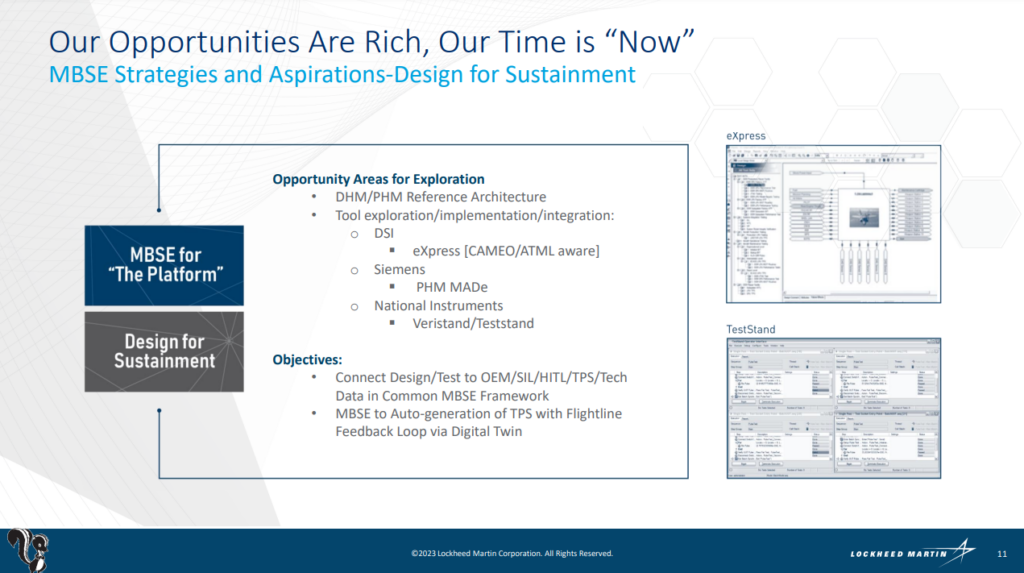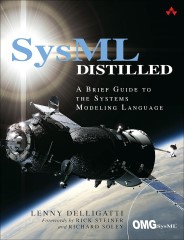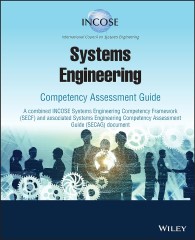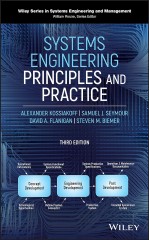In an age where complexity in systems design and engineering burgeons exponentially, the adoption of Model-Based Systems Engineering (MBSE) emerges as a pivotal strategy for organizations navigating this intricate terrain with precision. MBSE represents a radical departure from conventional document-centric systems engineering, emphasizing the creation, analysis, and dissemination of models to drive the system development process. This method not only promises heightened clarity and communication among stakeholders but also strives to streamline design processes, minimize errors, and enable seamless modifications.
Yet, the transition to MBSE is no mere leap in tools or procedures—it embodies a fundamental shift in business operations, demanding a thorough comprehension of an organization’s objectives, capabilities, and operational status. Far too often, organizations rush into MBSE adoption, driven by industry trends or the allure of modernization, lacking a clear understanding of their unique requirements or a strategic implementation plan. Regrettably, this approach often leads to subpar outcomes, squandered resources, and lingering doubts regarding the efficacy of MBSE.
The crux of successful MBSE implementation lies not in a one-size-fits-all solution, but in a tailored approach that meticulously considers the organization’s specific context. This entails a comprehensive exploration of the rationale behind adopting MBSE, an assessment of current capabilities and maturity levels, and a precise delineation of stakeholder roles vis-à-vis the benefits MBSE offers. By strategically aligning MBSE with business objectives and rigorously evaluating organizational readiness alongside anticipated outcomes, companies can optimize the transition and unlock MBSE’s full potential.
This article endeavors to demystify the intricacies of implementing MBSE within organizations, furnishing technical leaders and decision-makers with the insights and strategies necessary for this transformative journey. From identifying driving factors and managing stakeholder expectations to orchestrating a phased adoption and evaluating success metrics, we navigate the MBSE implementation landscape with technical acumen and precision. Whether embarking on the MBSE journey, planning integration, or optimizing existing frameworks, this article serves as a beacon, illuminating the path forward and ensuring that MBSE adoption is not just strategic but tailored to yield tangible value in technical realms.
Read our article on: Choosing the Best Books for practicing MBSE.
Table of Contents
- Understanding the Fundamentals of MBSE
- The Crucial First Step: Identifying the Why
- Mapping Stakeholder Roles to MBSE Benefits
- Trinity of Considerations for MBSE Implementation
- Strategic Deployment of MBSE
- Leveraging Techniques for Effective MBSE Implementation
- Measuring the Success of MBSE Implementation
- Case Study: Successful MBSE Implementation
- Implementing MBSE Wrap Up
Understanding the Fundamentals of MBSE
Before diving into the strategies for successful implementation, it’s crucial to grasp what Model-Based Systems Engineering (MBSE) encompasses and how it differs from traditional systems engineering approaches. MBSE is not merely an upgrade or a new set of tools; it represents a fundamental shift in mindset and methodology toward systems development and engineering.
What is MBSE?
At its core, MBSE is the formalized application of modeling to support systems requirements, design, analysis, verification, and validation activities beginning in the conceptual design phase and continuing throughout development and later life cycle phases. Unlike traditional approaches that rely heavily on text-based documentation, MBSE utilizes various models to represent and communicate the system.
MBSE vs. Traditional Systems Engineering
Traditional systems engineering has often been characterized by extensive documentation, where the representation of systems, their components, interactions, and processes is captured in countless pages of documents. This approach, while thorough, has several drawbacks, including difficulties in maintaining document consistency, challenges in communication between diverse teams, and inefficiencies in managing changes throughout the system’s lifecycle.
In contrast, MBSE seeks to mitigate these challenges by leveraging models as the primary means of information exchange. By adopting a model-centric approach, MBSE facilitates a clearer, more consistent, and dynamic representation of systems. Models in MBSE are not static; they are designed to evolve, offering real-time insights into the system’s design and operation, thus allowing for more informed decision-making and streamlined communication across all levels of system development.
Key Components of MBSE:
- Models: The heart of MBSE, models are structured representations of the system that incorporate requirements, design, behavior, and more.
- Methodology: MBSE is underpinned by a systematic methodology that guides the creation, analysis, and exploitation of models to inform and drive the engineering process.
- Tools: Tools in MBSE serve to create, manage, and analyze models. They facilitate the integration of models into the broader engineering workflow, ensuring that models contribute value across all stages of system development.
- Standards: Adoption of standards such as the Systems Modeling Language (SysML) ensures uniformity and consistency in the modeling approach, making models comprehensible and useful across different teams and projects.
Importance of Adopting a Strategic Approach to MBSE
The transition to MBSE requires more than just learning how to create and use models; it requires a transformation in organizational culture and practices. This underscores the importance of adopting a strategic approach to MBSE implementation. By understanding the fundamental principles and components of MBSE, organizations can better tailor their MBSE adoption strategy to their specific needs, capabilities, and goals. This strategic adoption is critical for harnessing the full potential of MBSE, allowing it to become a catalyst for innovation, efficiency, and enhanced communication within the organization.
In summary, understanding the fundamentals of MBSE lays the groundwork for its successful implementation. By appreciating what MBSE is, how it contrasts with traditional approaches, and why a strategic adoption is crucial, organizations can pave the way for a more streamlined, efficient, and effective engineering process.
The Crucial First Step: Identifying the Why
Embarking on the journey to implement Model-Based Systems Engineering (MBSE) in an organization is no small feat and requires careful consideration. Before delving into methodologies, tools, or training, the most pivotal step is understanding the motivation behind the transition to MBSE. The “why” forms the cornerstone of a successful MBSE implementation, providing direction, clarity, and purpose throughout the entire process.
Why MBSE?
At its core, the decision to adopt MBSE is often driven by the recognition of the growing complexities within systems engineering and the limitations of traditional, document-based approaches in addressing these challenges. However, each organization’s specific motivations can vary widely, ranging from improving project communication and reducing errors to enhancing design efficiency and facilitating innovation.
Understanding Your Motivation
To truly leverage MBSE, an organization must first reflect on its specific needs, pain points, and long-term goals. This introspection helps to define a clear set of objectives for what the organization seeks to achieve through MBSE. Whether it’s accelerating product development cycles, improving quality and reliability, or ensuring compliance with industry standards, understanding these goals is crucial. It’s imperative to engage stakeholders from across the organization in this process, as MBSE implementation will impact various aspects of operations, from engineering to management.
Tailoring MBSE Implementation to Organizational Goals
With the “why” firmly in hand, organizations can begin tailoring their MBSE implementation to directly address their identified needs. For instance, if a primary driver is to enhance communication among disparate teams, the focus might be on leveraging MBSE for its superior visualization and model-sharing capabilities. On the other hand, if mitigating errors throughout the system design process is the goal, emphasis may be placed on MBSE’s ability to facilitate early detection and resolution of design flaws.
Setting the Stage for Success
Identifying the “why” does more than just inform the strategic direction of MBSE implementation; it also sets the stage for measuring success. By having a clear understanding of what you aim to achieve with MBSE, it becomes possible to define specific metrics and KPIs that can be used to track progress and evaluate the effectiveness of MBSE practices within the organization. Furthermore, it serves as a rallying point for stakeholders, uniting them around a common objective and ensuring collective buy-in and support for the MBSE transition.
Whether it’s tackling the challenges of evolving system complexity or seeking to stand out in a competitive market through innovative design and efficiency, the reasons for adopting MBSE are as varied as the organizations that implement it. The crucial first step isn’t just a formality—it’s a foundational aspect of the MBSE journey that influences every subsequent decision, from choosing the right tools and methodologies to crafting an implementation strategy that aligns with organizational values and goals. By understanding and articulating the “why” behind MBSE, organizations can ensure that their transition is not only successful but also fully aligned with their visions for the future.
| Risks | Opportunities |
|---|---|
| Lack of clear objectives may lead to an unfocused MBSE implementation, wasting resources and time. | Clear understanding of objectives aligns MBSE implementation with organizational goals, maximizing resource efficiency. |
| Failure to engage all stakeholders can result in resistance or lack of buy-in, hampering the transition. | Early stakeholder engagement fosters organizational buy-in and addresses potential resistance proactively. |
| Poorly defined “why” can lead to selecting inadequate tools or methodologies, limiting MBSE’s effectiveness. | A well-articulated “why” guides the appropriate selection of tools and methodologies, enhancing MBSE’s efficacy. |
| Underestimating the organizational change impact can result in disruptions and slower adoption rates. | Recognizing and planning for change management can smooth the MBSE adoption process, reducing disruptions. |
| Overlooking training needs based on assumed benefits instead of defined goals may leave teams unprepared. | Identifying specific motivations for MBSE informs targeted training programs, equipping teams with necessary skills. |
Mapping Stakeholder Roles to MBSE Benefits
As organizations embark on the Model-Based Systems Engineering (MBSE) journey, understanding the diverse landscape of stakeholder needs becomes crucial for ensuring a cohesive and successful implementation. Each stakeholder group, from engineers to project managers, and from sponsors to end-users, stands to gain distinct advantages from MBSE. Mapping these roles to the specific benefits they can expect from MBSE not only aligns expectations but also fosters engagement and support across the organization.
Identifying Key Stakeholders
The first step in mapping roles to benefits is identifying who the stakeholders are in the context of MBSE implementation. Stakeholders can broadly be categorized into internal and external entities affected by or having an effect on the MBSE transition. Internally, this could include engineers (systems, software, mechanical), project and program managers, MBSE sponsors (senior leadership pushing for MBSE adoption), and potentially other departments such as quality assurance and sales. Externally, stakeholders might include clients, regulatory bodies, and even suppliers if the organization’s MBSE practices extend into the supply chain.
Understanding Stakeholder Needs
Each of these roles comes with its set of expectations and requirements from the system engineering process. For instance, engineers may seek better tools for visualization and simulation to reduce design errors and iterate more efficiently. Project managers may prioritize improvements in documentation and communication to keep projects on schedule and within budget. Meanwhile, MBSE sponsors might be looking at the broader picture of gaining a competitive edge through faster innovation cycles and improved product quality.
Linking Roles to MBSE Benefits
Once stakeholders and their needs are clearly identified, the next step involves linking these roles to the specific benefits MBSE can provide. This process not only highlights the value MBSE brings to each role but also helps in tailoring communication and training efforts to address specific concerns and aspirations. Here are some examples:
- Engineers: Benefit from a unified modeling language (SysML) that supports better design abstraction, simulation, and validation activities, leading to enhanced product quality and innovation.
- Project Managers: Gain through improved project visibility and traceability from requirements to delivery, which aids in risk management and decision-making.
- MBSE Sponsors: See value in the strategic advantages of faster time-to-market and enhanced product lifecycle management, ensuring the organization remains competitive and adaptable.
- Clients and End-Users: Ultimately benefit from higher quality, more reliable products that meet user needs and that better meet their requirements and expectations.
Facilitating Buy-in and Engagement
Mapping stakeholders to MBSE benefits serves a dual purpose. First, it ensures that the implementation strategy is comprehensively designed to meet the diverse needs across the organization. Second, it acts as a powerful tool for facilitating stakeholder buy-in. When individuals and teams can clearly see what’s in it for them, their engagement and support for the MBSE transition are significantly boosted.
Measuring the Realization of Benefits
Moreover, the mapping exercise provides a foundation for defining metrics and KPIs to measure the success of MBSE implementation from various stakeholder perspectives. This ensures that the MBSE implementation remains aligned with organizational goals and delivers on its promises, allowing for continuous improvement in the approach and execution.
The transition to Model-Based Systems Engineering is a strategic evolution that offers ample benefits to organizations navigating the complexities of modern systems development. By effectively mapping stakeholder roles to the specific benefits of MBSE, organizations can ensure that the transition is meaningful, beneficial, and supported across the board. This lays the groundwork for a successful MBSE implementation, ensuring that all stakeholders are aligned, engaged, and poised to reap the rewards of this transformative approach.
Trinity of Considerations for MBSE Implementation
Implementing Model-Based Systems Engineering (MBSE) within an organization is a complex journey that requires a well-defined strategy tailored to the organization’s unique needs and context. To navigate this journey successfully, it’s essential to consider three fundamental aspects: Reason, Capability, and Evolution. Together, these considerations form the Trinity of MBSE Implementation, guiding organizations through the holistic assessment and strategic planning required to ensure a smooth and effective MBSE adoption. Below is an overview of each consideration and its key aspects, providing a roadmap for organizations to align MBSE with their business objectives, assess and develop their capabilities, and understand their maturity level to create a tailored adoption roadmap.
| Consideration | Description | Key Aspects |
|---|---|---|
| Reason | Aligning MBSE with business objectives and stakeholder needs. | Understanding the “why” behind MBSE adoption; linking MBSE benefits to specific stakeholder roles; setting clear objectives for what MBSE should achieve within the organization. |
| Capability | Assessing current capabilities and identifying areas for growth and development. | Evaluating existing tools, processes, and skill sets; identifying gaps in capabilities related to MBSE; planning for training, tool acquisition, or process refinement. |
| Evolution | Understanding your organization’s maturity level and creating a roadmap for MBSE adoption. | Determining the current state of MBSE maturity; envisioning the desired future state; creating a phased adoption plan that includes milestones, KPIs, and review checkpoints. |
Strategic Deployment of MBSE
The transition to Model-Based Systems Engineering (MBSE) represents a strategic initiative that can redefine an organization’s approach to systems development. Successfully deploying MBSE requires a structured plan that not only addresses the technical aspects of the methodology but also the organizational change it represents. Below is a step-by-step guide on developing an MBSE implementation strategy, incorporating change management practices, and customizing training and development programs.
Step-by-Step Guide on Developing an MBSE Implementation Strategy
- Define Objectives and Goals: Start by clearly defining what you aim to achieve with MBSE. Goals should align with overall business objectives and address specific needs identified during the “Reason” assessment phase.
- Conduct a Current State Assessment: Evaluate your organization’s current capabilities in terms of tools, processes, and skills related to systems engineering. This assessment should also cover the current level of MBSE maturity.
- Identify Gaps and Needs: Based on the assessment, identify gaps in capabilities and areas where improvements are required. This includes gaps in tools, processes, and competencies.
- Develop an MBSE Roadmap: Create a phased implementation plan that outlines the steps to move from the current state to the desired state of MBSE maturity. The roadmap should include milestones, resource allocation, and timeframes.
- Select Appropriate Tools and Frameworks: Choose the tools, languages (like SysML), and frameworks that best fit your organization’s needs and the objectives defined for MBSE deployment.
- Define KPIs and Success Metrics: Establish clear metrics to measure the success of the MBSE implementation, considering both qualitative and quantitative aspects.
- Rollout Plan: Develop a detailed plan for the rollout of MBSE practices across projects and teams, considering the need for a phased or pilot-based approach.
Incorporating Change Management Practices
- Communication: Implement a communication strategy that keeps all stakeholders informed about the MBSE implementation process, its benefits, and expected changes.
- Training and Support: Early in the process, identify the need for training sessions to equip teams with the necessary MBSE skills and competencies.
- Addressing Resistance: Be prepared to address resistance by involving stakeholders in the process and addressing concerns through open dialogue and demonstration of value.
- Continuous Feedback: Establish feedback mechanisms to gather insights from teams on the ground and adjust strategies as necessary.
Customizing Training and Development Programs
- Role-Based Training: Customize training programs based on the roles and needs identified during the stakeholder mapping process. This ensures that each team member acquires relevant skills and knowledge.
- Blended Learning Approaches: Use a combination of training techniques, including workshops, e-learning, and hands-on projects, to cater to different learning preferences.
- Competency Development: Beyond tool-specific training, focus on developing the competencies required for effective systems thinking and problem-solving within an MBSE context.
- Continuous Learning: Promote a culture of continuous learning by providing opportunities for ongoing education and upskilling in MBSE practices and tools.
The strategic deployment of MBSE is a journey that transforms not just the technical processes but also the organizational culture around systems engineering. By following a structured implementation strategy, incorporating proven change management practices, and customizing training programs, organizations can ensure a smooth transition to MBSE. This strategic approach not only facilitates the successful adoption of MBSE but also maximizes its benefits, driving greater efficiency, innovation, and quality in systems development projects.
Recommended Further Reading Amazon BooksLeveraging Techniques for Effective MBSE Implementation
The implementation of MBSE within an organization is an intricate process that goes beyond the adoption of new tools or methodologies; it requires engaging stakeholders at all levels and aligning the MBSE journey with the organization’s strategic vision. Two practical techniques that have proven effective in facilitating this engagement and alignment are team storming and Ravens.
Team Storming for Stakeholder Engagement
Team storming, a dynamic and inclusive technique, encourages the active participation of diverse stakeholders in the MBSE implementation process. This method involves structured brainstorming sessions where team members from various functions discuss their views, challenges, and expectations regarding the transition to MBSE. By harnessing the collective insights and experiences of the group, organizations can uncover hidden concerns, potential resistance points, and areas requiring additional support or clarification.
Team storming sessions facilitate a cooperative environment where stakeholders can openly share their ideas and contribute to shaping the MBSE implementation strategy. This collaborative approach ensures that the MBSE transition is not seen as merely a top-down directive but as a collective journey towards improving the organization’s systems engineering capability.
Ravens for Mapping the MBSE Path
Ravens is a strategic tool designed to assess the organization’s current state in terms of MBSE maturity and capabilities, define the desired future state, and identify the steps required to bridge the gap. Through a series of interactive workshops, stakeholders place physical or digital cards representing various aspects of MBSE (such as tools, processes, competencies, and frameworks) on a board to visualize the organization’s MBSE landscape.
This technique allows for an evaluation of the current MBSE capability against industry benchmarks or organizational objectives, highlighting areas of strength and those requiring development. Ravens sessions provide a clear visual roadmap for MBSE implementation, facilitating discussions on priorities, resource allocation, and timelines.
How These Techniques Assist in the MBSE Journey
Both team storming and Ravens play crucial roles in engaging stakeholders and developing a feasible, tailored strategy for MBSE implementation. Team storming brings diverse perspectives to the table, fostering buy-in and addressing potential resistance early on. Conversely, Ravens offers a structured approach to defining the implementation roadmap, ensuring that the MBSE strategy is aligned with organizational capabilities and goals.
Together, these techniques empower organizations to navigate the complexities of MBSE implementation, ensuring a clear understanding of the starting point, the vision for MBSE within the organization, and the actionable steps required to achieve it.
Measuring the Success of MBSE Implementation
Success in the implementation of Model-Based Systems Engineering (MBSE) can be elusive without concrete metrics and Key Performance Indicators (KPIs) to gauge progress and outcomes. Establishing these metrics is essential to demonstrating the tangible benefits of MBSE and ensuring the initiative remains aligned with the strategic goals of the organization.
Setting Up Metrics and KPIs
When defining metrics and KPIs for MBSE, organizations should consider both quantitative and qualitative aspects of system development. Quantitative metrics might include improvements in development cycle times, reduction in design errors caught in earlier phases, and cost savings achieved through improved efficiency. Qualitative measures could involve enhanced team collaboration, improved stakeholder communication, and increased satisfaction levels among clients and end-users.
These metrics should be closely tied to the initial “why” behind the MBSE adoption, ensuring they directly reflect the anticipated benefits and outcomes discussed during the planning phase.
Regular Review and Adjustment Processes
Setting KPIs and metrics is not a one-time task but part of an ongoing process that requires regular review and adjustment. As the organization evolves and the MBSE implementation matures, so too should the benchmarks for success.
Regular review sessions involving key stakeholders allow the organization to assess progress against the set KPIs, identify areas of strength, and highlight opportunities for further improvement. These sessions also offer the chance to recalibrate the MBSE strategy in response to internal shifts or external factors, ensuring the organization remains agile and responsive to the changing landscape of systems engineering.
Implementing these review and adjustment processes ensures that the MBSE initiative remains a dynamic and evolving component of the organization’s systems engineering approach, continuously aligned with achieving strategic objectives and delivering real, measurable value.
The journey towards successful MBSE implementation is multi-faceted, involving strategic planning, active stakeholder engagement, and the continuous measurement and refinement of practices. By leveraging practical techniques such as team storming and Ravens, organizations can ensure a collaborative and strategic approach to MBSE deployment. Furthermore, by establishing and regularly reviewing concrete metrics and KPIs, organizations can measure the impact of MBSE, adjust strategies as needed, and ultimately achieve a seamless integration of MBSE that aligns with their overall business goals, driving efficiency, innovation, and quality in systems development.
Case Study: Successful MBSE Implementation
The transition to Model-Based Systems Engineering (MBSE) is a journey fraught with challenges yet ripe with opportunities for transformative outcomes. To demonstrate the practical implications and benefits of MBSE, we explore a well-known industry case study. Through these real-life examples, we distill critical lessons learned and best practices for organizations contemplating or undergoing their MBSE implementation.

for Future Digital Flight Lines
Lockheed Martin: Pioneering MBSE in Aerospace and Defense
Background
Lockheed Martin, a global aerospace, defense, and security company, embarked on an MBSE journey to address the growing complexity of its projects and to enhance collaboration across multidisciplinary teams. The company recognized the limitations of traditional document-based approaches, particularly in managing intricate system interdependencies and ensuring coherent communication among stakeholders.
Challenges
- Managing the complexity of sophisticated defense systems involving numerous components and subsystems.
- Facilitating effective collaboration and communication across diverse teams and disciplines.
- Maintaining consistency and traceability of system requirements throughout the project lifecycle.
Strategies
- Adoption of SysML (Systems Modeling Language) to provide a standardized approach to model complex systems.
- Development of a centralized MBSE repository to facilitate access to up-to-date models and documentation.
- Implementation of training programs and workshops to upskill engineers and project managers in MBSE methodologies and tools.
Outcomes
- Enhanced visibility and traceability of system requirements, leading to improved alignment between design decisions and customer needs.
- Increased efficiency in the system design process, with a significant reduction in errors and inconsistencies discovered during the integration and testing phases.
- Improved collaboration among teams, resulting in streamlined communication and a unified understanding of project objectives and statuses.
Lessons Learned and Best Practices
- Upfront Investment in Training: Lockheed Martin’s experience underscores the importance of investing in comprehensive training and skill development in MBSE methodologies and tools. This preparation is crucial for ensuring that all team members are equipped to leverage MBSE fully.
- Centralized Information Repository: Establishing a centralized MBSE repository proved invaluable for maintaining consistency in models and documentation, facilitating effective knowledge sharing, and supporting collaborative design efforts.
- Stakeholder Engagement: Early and continuous engagement of all stakeholders, including customers, was key to ensuring that the MBSE implementation remained closely aligned with the project’s goals and customer expectations.
Lockheed Martin’s journey exemplifies the transformative potential of MBSE when thoughtfully implemented. The case highlights the critical role of strategic planning, stakeholder engagement, and continuous learning in overcoming the inherent challenges of adopting MBSE. For organizations embarking on this path, the lessons from Lockheed Martin offer valuable insights into leveraging MBSE to enhance system design processes, facilitate collaboration, and achieve greater efficiencies in complex project environments. Through careful preparation, commitment to ongoing education, and a focus on cross-disciplinary collaboration, organizations across industries can harness the power of MBSE to navigate the complexities of modern systems engineering.

Implementing MBSE Wrap Up
The adoption and implementation of Model-Based Systems Engineering (MBSE) signify a transformative step towards addressing the complexities inherent in modern systems design and development. Through the exploration of MBSE fundamentals, strategic deployment methodologies, and practical techniques such as team storming and Ravens, alongside the lessons gleaned from industry giants like Lockheed Martin, we’ve charted a course for organizations embarking on this critical journey.
Recap of Key Points
- Understand the Why: The initial step in MBSE implementation is understanding the core reasons for its adoption, aligning the transition with business objectives, stakeholder needs, and the broader organizational vision.
- Strategic Deployment: A successful MBSE implementation requires a strategic approach, encompassing capability assessment, addressing the organization’s specific evolutionary stage, and tailoring training and development programs accordingly.
- Engagement and Alignment: Techniques such as team storming and intuitive tools like Ravens provide a framework for engaging stakeholders, ensuring alignment, and mapping out a clear and actionable MBSE implementation pathway.
- Measurement for Success: Establishing concrete metrics and Key Performance Indicators (KPIs) is crucial for measuring the tangible benefits of MBSE, allowing for continuous adjustment and alignment with organizational goals.
The Long-term Benefits
Organizations that successfully implement MBSE stand to reap long-term benefits, including enhanced efficiency in the design process, improved collaboration across teams, and the ability to deliver higher quality systems that meet or exceed customer expectations. Moreover, the strategic foresight afforded by a well-established MBSE framework enables organizations to remain agile and adaptable in the face of changing market dynamics and technological advancements.
Encouragement for a Tailored Approach
Encountering the challenges of today’s complex systems engineering landscape necessitates a strategic, informed, and tailored approach to MBSE. Organizations are encouraged to consider their unique contexts, capabilities, and goals as they navigate the MBSE implementation process. Embracing MBSE not as a one-size-fits-all solution but as a flexible framework allows for customization in alignment with specific organizational needs and aspirations.
In conclusion, the successful adoption of MBSE requires commitment, strategic planning, and continuous engagement from all levels of an organization. With the right approach, tools, and mindset, the transition to MBSE can propel organizations towards achieving greater innovation, efficiency, and competitiveness in their respective fields. In the journey of modern systems engineering, MBSE emerges not just as a methodology, but as a catalyst for growth, transformation, and sustained success.
Further Reading
Read our article on Unlocking MBSE: Choosing the Best Books for Model-Based Systems Engineering.
For those looking to delve deeper into the world of Model-Based Systems Engineering (MBSE) and its strategic implementation, the following list of resources provides a gateway to a wealth of knowledge and insights:
- “Model-Based Systems Engineering with OPM and SysML” by Dov Dori A comprehensive guide that explores the fundamentals of MBSE using Object-Process Methodology (OPM) together with the Systems Modeling Language (SysML), providing readers with practical tools and methodologies for implementing MBSE.
- “A Practical Guide to SysML: The Systems Modeling Language” by Sanford Friedenthal, Alan Moore, and Rick Steiner An essential resource for systems engineers, this book provides an in-depth exploration of SysML, the standardized language used in MBSE. It covers best practices and offers industry-proven techniques for modeling complex systems.
- “INCOSE Systems Engineering Handbook: A Guide for System Life Cycle Processes and Activities“ Published by the International Council on Systems Engineering (INCOSE), this handbook is a core reference providing a comprehensive overview of the systems engineering process, including insights into MBSE practices.
- “Model-Based System Architecture” by Timothy L. Weilkiens and Jesko G. Lamm This book presents a structured approach to system architecture using MBSE. It focuses on modeling techniques that support the design and analysis of complex systems, making it invaluable for architects and systems engineers.
- “SysML Distilled: A Brief Guide to the Systems Modeling Language” by Lenny Delligatti For those seeking a concise introduction to SysML as part of their MBSE journey, this book distills the core aspects of the language, enabling quick comprehension of its most essential features.
- INCOSE Webinars and Technical Papers The International Council on Systems Engineering (INCOSE) website hosts a wealth of webinars, technical papers, and resources that delve into various aspects of systems engineering and MBSE, suitable for both beginners and experienced professionals.
By engaging with these resources, those interested in MBSE can gain a deeper understanding of its methodologies, best practices, and real-world applications, equipping them with the knowledge to successfully navigate the complexities of modern systems engineering.












